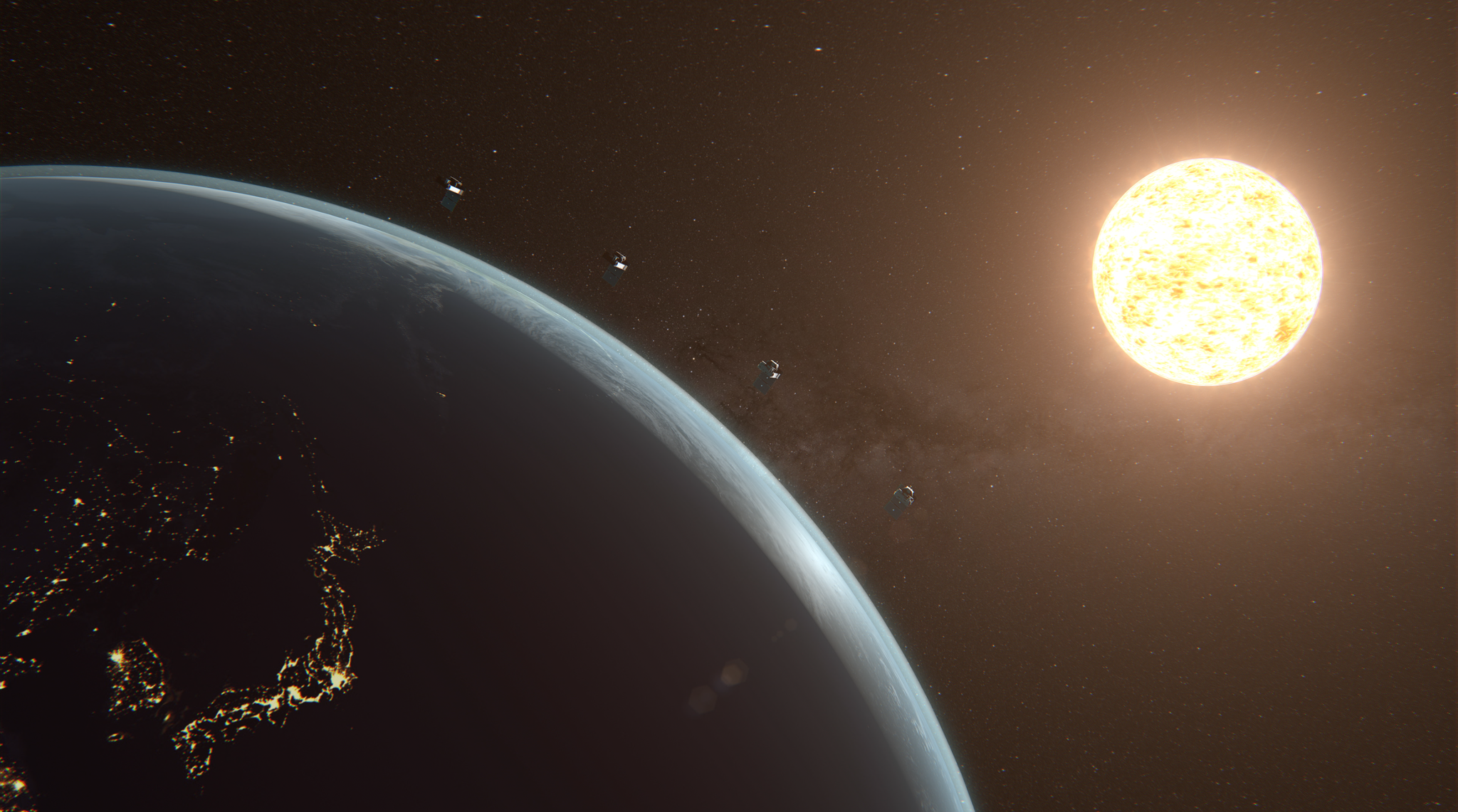NASA’s PUNCH Mission

Launching as a rideshare with NASA’s SPHEREx (Spectro-Photometer for the History of the Universe, Epoch of Reionization and Ices Explorer), the agency’s PUNCH (Polarimeter to Unify the Corona and Heliosphere) mission is a constellation of four small satellites that will make global, 3D observations of the Sun’s outer atmosphere, the corona, to learn how the mass and energy there become the solar wind.
The four PUNCH spacecraft will be in a polar (Sun-synchronous) low Earth orbit in a dawn/dusk alignment and spread out around Earth along the day-night line. This means the satellites will be near the terminator line, that separates day from night on Earth. This enables each spacecraft to nearly always be in sunlight and the spacecraft constellation will have a clear view in all directions around the Sun.
The two-year PUNCH mission will build upon and contribute to NASA’s Heliophysics Program, studying the Sun and its influence throughout the solar system including our home on Earth. The main science goal of PUNCH is to determine the physical processes that unify the solar corona with the rest of the solar system environment, or heliosphere, by understanding how coronal structures become the solar wind and understanding the evolution of transient structures, such as coronal mass ejections, in the young solar wind.
By imaging the Sun’s corona and the solar wind together, scientists hope to better understand the entire inner heliosphere – Sun, solar wind, and Earth – as a single connected system.
The PUNCH satellites have more sensitive cameras and a wider field of view than previous instruments focused on the Sun’s outer atmosphere and will provide greater detail and brand-new 3D measurements of this region. The images gathered will provide unprecedented quality understanding of what occurs in this region of space near out home.
The PUNCH mission will provide unprecedented data on the solar wind and space weather events as they leave the Sun and cross the solar system, which can often have an enormous impact on human society and technology, from sparking and intensifying auroras to interfering with satellites or triggering power outages. The measurements from PUNCH will provide scientists with new information about how these potentially disruptive events form and evolve, which could lead to more accurate predictions about the arrival and impact of space weather events at Earth and the impact on humanity’s robotic explorers in space. The data also will be available to the public at the same time it is available to the science team, published through the Solar Data Analysis Center at NASA’s Goddard Space Flight Center in Greenbelt, Maryland.
The PUNCH mission is led by Southwest Research Institute’s Solar System Science and Exploration Division located in Boulder, Colorado. The mission is a NASA Small Explorers mission managed by the Explorers Program Office at NASA Goddard for the NASA’s Science Mission Directorate.
For more information about either mission, visit:

























